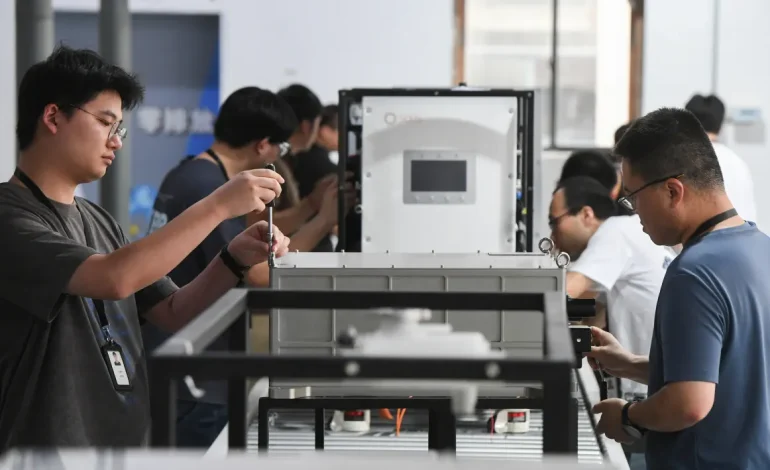China’s Industrial Profits Decline Sharply Amid Weak Demand and Price Pressures

China’s industrial sector recorded its steepest monthly decline in profits in seven months, highlighting continued challenges for manufacturers despite broader signs of economic recovery, CNBC reports.
According to government data released this week, profits at industrial firms fell 9.1% in May compared to a year earlier—the largest drop since October 2024.
This decline comes as part of a broader trend, with cumulative profits falling 1.1% in the first five months of 2025 from the same period last year. The National Bureau of Statistics attributed the downturn to sluggish domestic demand and falling prices for industrial goods, both of which have squeezed profit margins across multiple sectors.
While retail sales in May rose at their fastest pace since late 2023—helped by government subsidies and improved consumer sentiment—the recovery has not translated into stronger earnings for manufacturers. Economists say the main culprit is a deepening price war, as companies compete for market share at the cost of profitability.
“Foot traffic has improved, but prices are still below pre-COVID levels,” said Alfredo Montufar-Helu, senior advisor at The Conference Board. “Heavy discounting and low price levels are limiting profit recovery.”
The effects vary by industry. The mining sector saw a sharp 29% drop in profits, while automotive manufacturing declined by 11.9% year-over-year. State-owned enterprises reported a 7.4% drop, while non-state firms saw a more modest 1.5% decline. In contrast, foreign firms—including those tied to Hong Kong, Macau, and Taiwan—registered a small 0.3% increase in profits for the same period.
A key driver behind these mixed results has been the recent drop in global commodity prices, which has lowered input costs but also suppressed selling prices for many industrial products.
Despite the concerning figures, analysts believe the Chinese government may not introduce additional stimulus in the near term. GDP growth is currently tracking at 5.2%, just above Beijing’s official target of 5%, suggesting that broader economic conditions remain stable.
“There is no guarantee of more stimulus,” said Neo Wang, lead China economist at Evercore ISI.
He noted that policy decisions at the upcoming July Politburo meeting may hinge on developments in US-China trade negotiations and tariff policy.
Robin Xing of Morgan Stanley echoed that view, emphasizing that stimulus measures will likely be held in reserve unless clearer signs of economic stress emerge in the second half of the year.
While US-bound exports fell sharply by 34.5% in May, China’s overall export performance remained resilient, rising 4.8% year-over-year, buoyed by increased shipments to Southeast Asia and the European Union. Analysts at Citi forecast 2.3% export growth for the year, factoring in continued weakness in the US market.
However, long-term risks remain. Economists warn of persistent deflationary pressures, a possible slowdown in export demand, and the impact of trade-related uncertainties, particularly in sectors sensitive to US tariffs and technology restrictions.









The latest news in your social feeds
Subscribe to our social media platforms to stay tuned